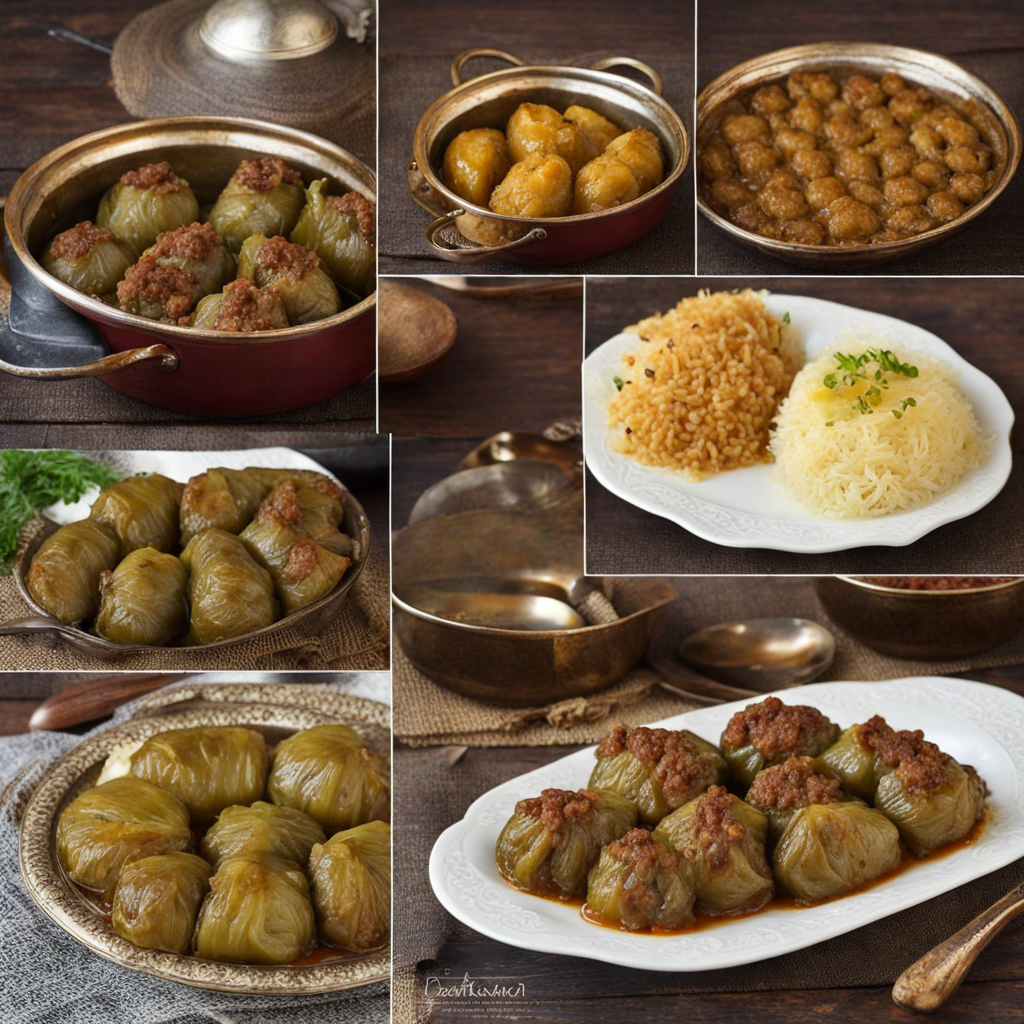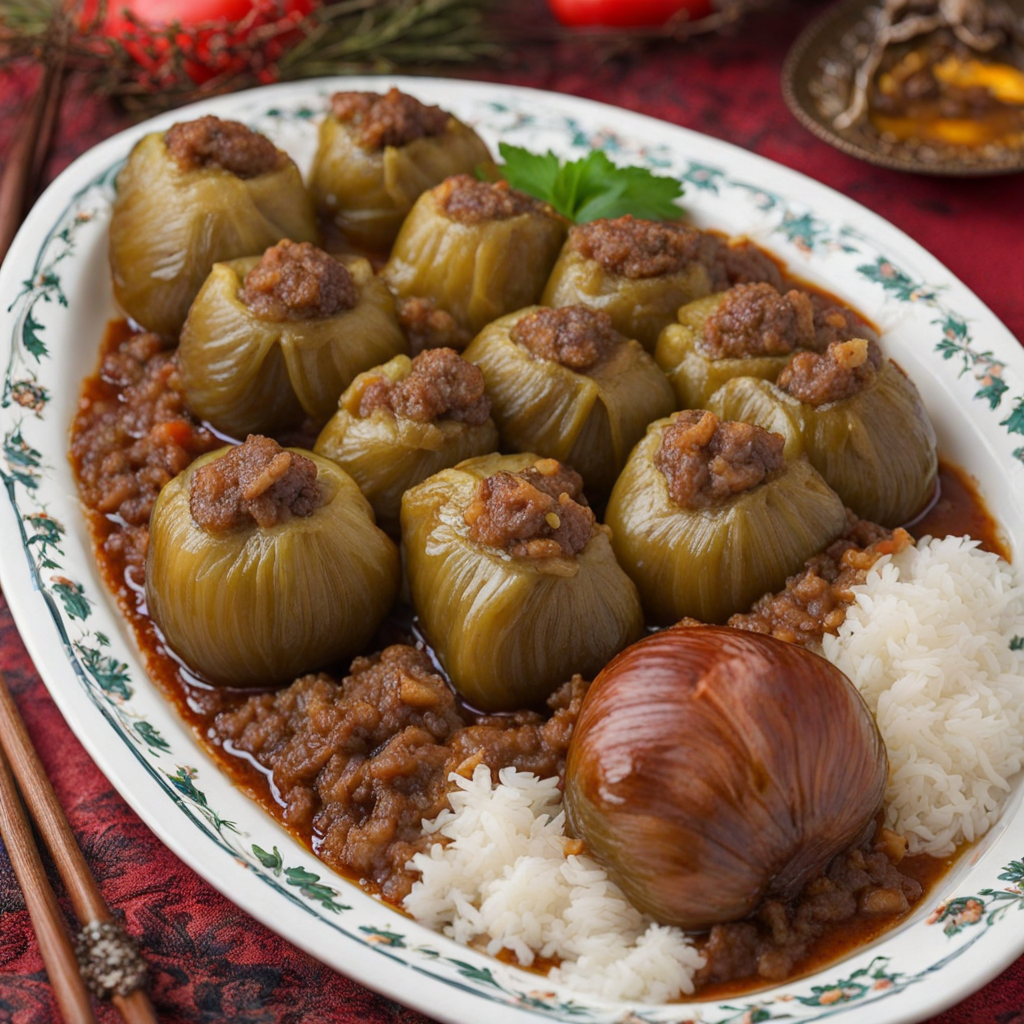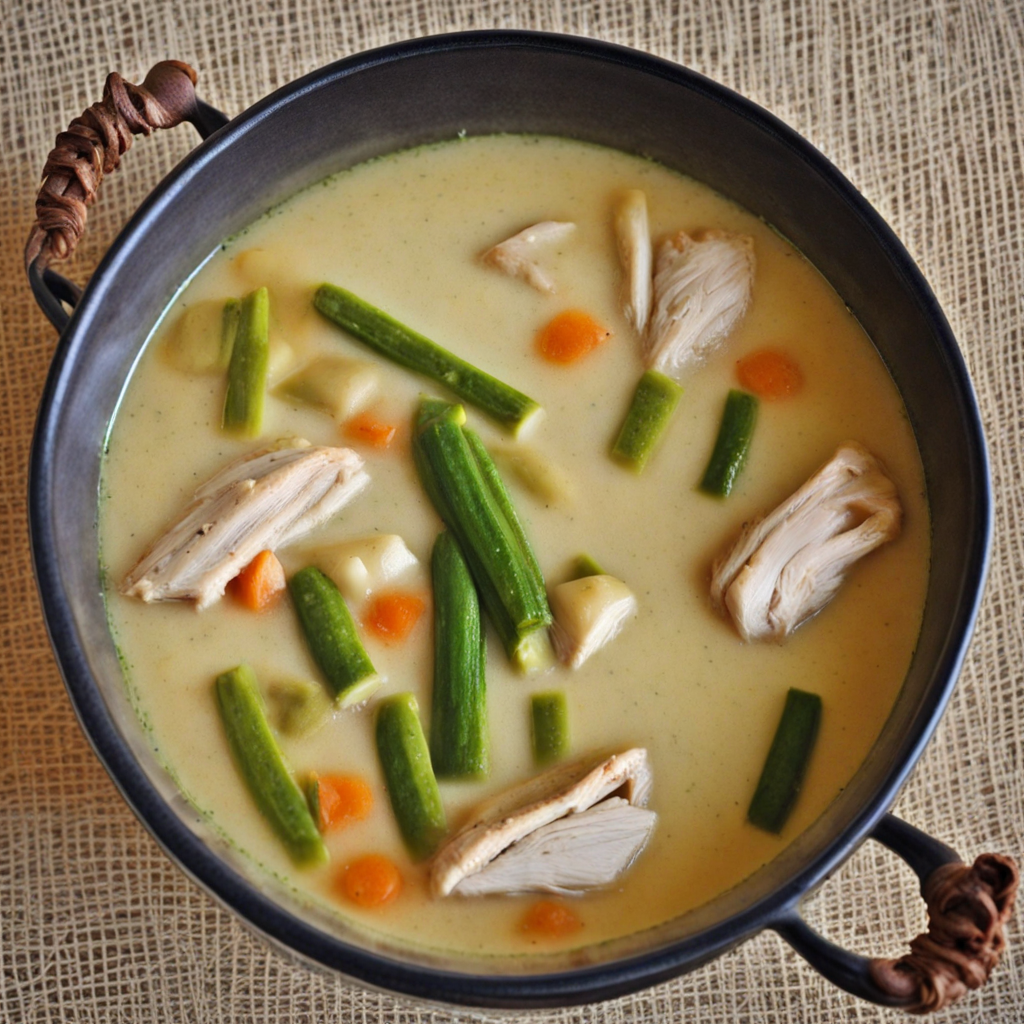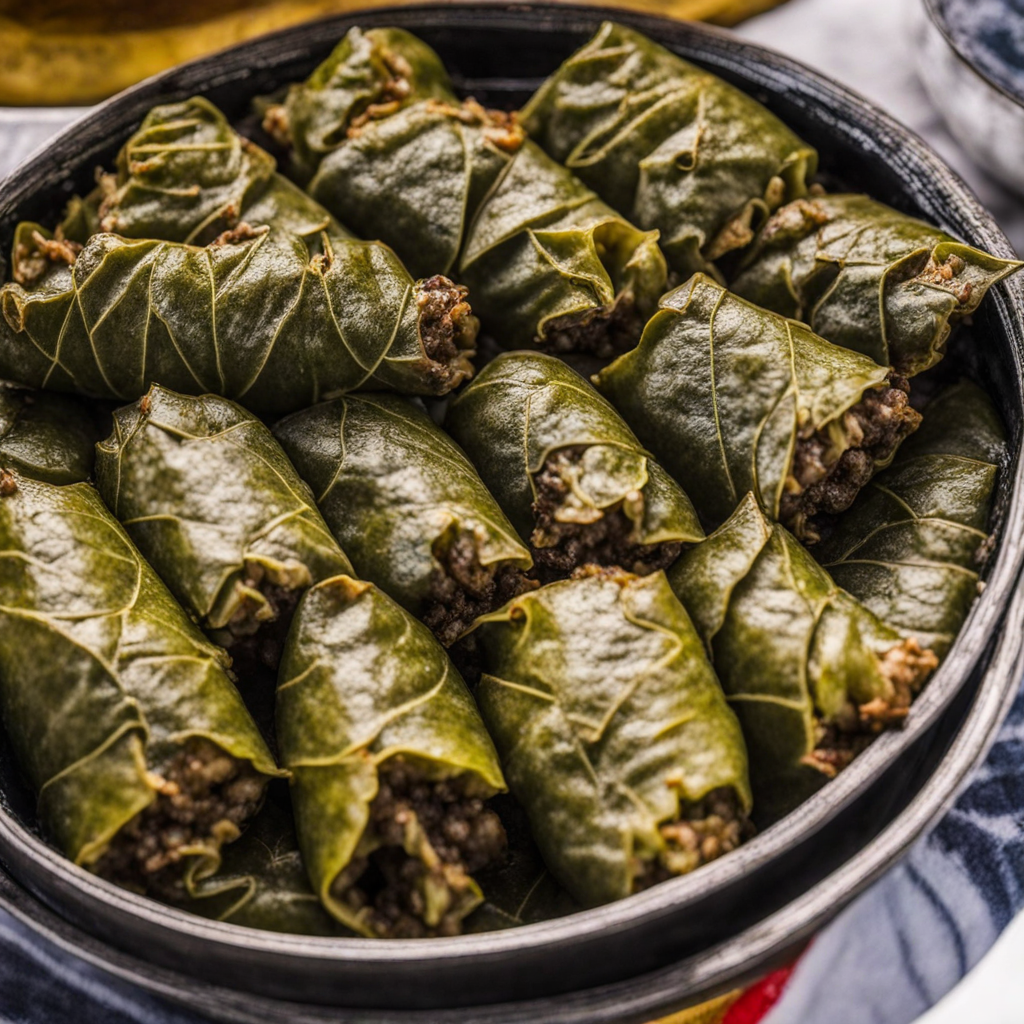Sogan-dolma
Sogan-dolma is a delightful and unique dish hailing from Bosnia and Herzegovina, showcasing the rich culinary traditions of the region. At its core, this dish features onions that are meticulously hollowed out and stuffed with a savory mixture, typically comprising minced meat, rice, and a medley of spices. The onions are first blanched to soften their layers, allowing them to embrace the filling while imparting a sweet and caramelized flavor during the cooking process. The result is a comforting, aromatic dish that captures the essence of Bosnian home cooking. The stuffing is often seasoned with herbs such as parsley and dill, alongside traditional spices like paprika and black pepper, adding depth and complexity to each bite. When cooked, the onions become tender, and the flavors of the filling meld beautifully with the natural sweetness of the onion. Sogan-dolma is typically simmered in a rich tomato sauce, which not only enhances the dish’s flavor but also provides a luscious, tangy contrast to the savory filling. This combination makes for a hearty meal that is both satisfying and nourishing. Sogan-dolma is often served with a side of fresh bread, which is perfect for soaking up the delicious sauce, or accompanied by a simple salad to balance the dish's richness. It is a popular choice for family gatherings and special occasions, embodying the warmth and hospitality that Bosnian cuisine is known for. For anyone looking to explore new flavors, the unique blend of textures and tastes in sogan-dolma promises an unforgettable culinary experience.
How It Became This Dish
The History of Соган-долма: A Culinary Gem of Bosnia and Herzegovina Соган-долма, a cherished dish from Bosnia and Herzegovina, embodies the rich tapestry of culinary traditions that have evolved in the region over centuries. This dish, which translates to "onion dolma," features onions stuffed with a savory filling, often consisting of minced meat, rice, and aromatic herbs. The origins and cultural significance of Соган-долма reflect the diverse influences that have shaped Bosnian cuisine, making it a symbol of both home-cooked comfort and communal gathering. #### Origins: A Fusion of Cultures The roots of Соган-долма can be traced back to the Ottoman Empire, which ruled over the Balkans for several centuries. During this period, the culinary practices of various ethnic groups began to intertwine, resulting in a fusion of flavors, techniques, and ingredients. The term "dolma" itself is derived from the Turkish word "dolmak," meaning "to be stuffed." The Ottomans popularized the practice of stuffing vegetables, and it became a staple in many regions they governed. Onions, with their sweet and earthy flavor, were a common staple in the kitchens of the Balkans. The use of onions in Соган-долма is particularly significant as it reflects the resourcefulness of home cooks who sought to make the most of available ingredients. The dish, while simple, is a testament to the creativity of Bosnian cooks who transformed humble ingredients into a delightful meal. As the Ottoman influence waned in the 19th century, Bosnia and Herzegovina underwent significant political and social changes. The culinary landscape continued to evolve, incorporating elements from neighboring cultures, including those of the Austro-Hungarian Empire, which ruled the region from the late 19th century until World War I. This period introduced new cooking techniques and ingredients, further enriching the flavor profile of traditional Bosnian dishes, including Соган-долма. #### Cultural Significance Соган-долма is much more than just a dish; it represents the heart and soul of Bosnian hospitality. In Bosnian culture, food is a central element of social gatherings, family celebrations, and religious events. The preparation of Соган-долма often involves the participation of family members, making it a communal activity that strengthens bonds and fosters a sense of belonging. Traditionally, Соган-долма is served during special occasions such as weddings, religious holidays, and family gatherings. The act of preparing and sharing this dish embodies the values of generosity, warmth, and togetherness that are integral to Bosnian culture. For many, the scent of simmering onions and spices evokes nostalgic memories of family meals and cherished moments spent around the table. In addition to its role in family gatherings, Соган-долма holds a special place in the culinary heritage of Bosnia and Herzegovina. It is often featured in local restaurants and eateries, where it is enjoyed by both locals and visitors. The dish serves as a culinary ambassador, showcasing the flavors of the region and inviting others to experience the warmth of Bosnian hospitality. #### Development Over Time Throughout the 20th century, Bosnia and Herzegovina experienced significant political upheaval, particularly during the Yugoslav Wars of the 1990s. During this tumultuous period, traditional recipes and cooking practices were at risk of being lost. However, the resilience of the Bosnian people ensured that culinary traditions, including Соган-долма, were preserved and passed down through generations. In the years following the war, Bosnia and Herzegovina saw a resurgence in interest in its culinary heritage. Chefs and home cooks alike began to explore and celebrate traditional dishes, leading to a revival of recipes that had been neglected or forgotten. Соган-долма experienced a renaissance as chefs sought to reintroduce authentic Bosnian flavors and showcase the country's rich culinary history. Modern interpretations of Соган-долма have emerged, with chefs experimenting with different fillings and cooking techniques. While the classic version remains popular, variations featuring vegetarian or vegan fillings have gained traction, reflecting changing dietary preferences and lifestyles. This adaptability has allowed Соган-долма to remain relevant in contemporary cuisine while honoring its traditional roots. #### Ingredients and Preparation The preparation of Соган-долма is a labor of love that begins with selecting the right onions. Sweet, large onions are typically used, as their natural sweetness complements the savory filling. The stuffing often consists of a mixture of minced meat (commonly beef or lamb), rice, finely chopped herbs (such as parsley and dill), and spices like paprika and black pepper. Some recipes may incorporate tomatoes or other vegetables to enhance the filling. The process of preparing Соган-долма involves carefully peeling the onions, blanching them to soften, and then stuffing them with the flavorful mixture. Once assembled, the stuffed onions are usually simmered in a tomato-based sauce or broth, allowing the flavors to meld together. The dish is often garnished with fresh herbs before serving, adding a touch of color and freshness. #### Conclusion Соган-долма is a culinary treasure that encapsulates the history, culture, and resilience of Bosnia and Herzegovina. Its origins rooted in the Ottoman Empire, combined with the influences of neighboring cultures, have created a dish that is both traditional and dynamic. As it continues to evolve, Соган-долма remains a symbol of Bosnian hospitality, bringing people together around the table to share in the joy of food and community. Today, Соган-долма not only reflects the rich culinary heritage of Bosnia and Herzegovina but also serves as a reminder of the importance of preserving traditional recipes in an ever-changing world. Whether enjoyed at a family gathering or a local restaurant, this beloved dish captures the essence of Bosnian culture—one that celebrates the past while embracing the future.
You may like
Discover local flavors from Bosnia And Herzegovina







